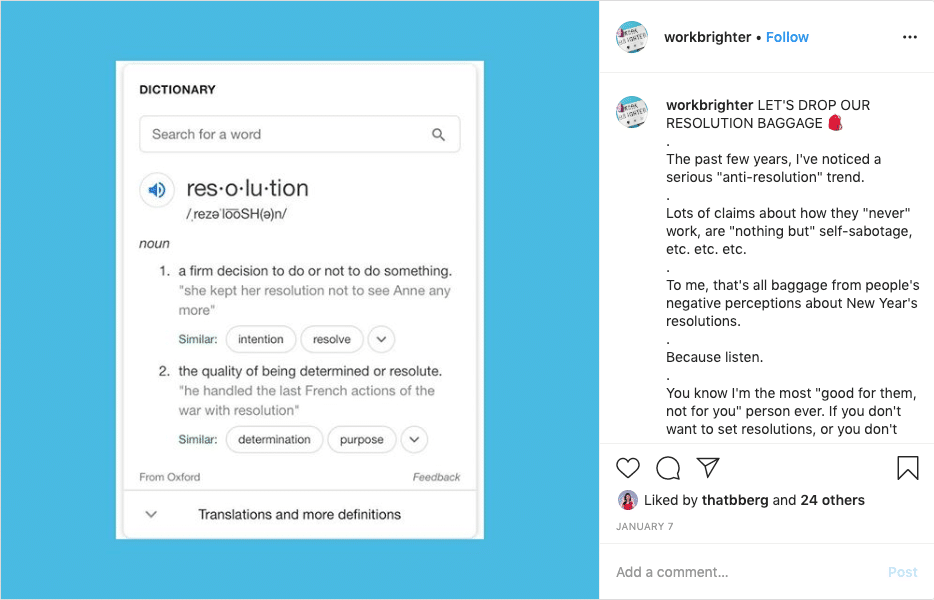Content has a lifespan. It is born when you hit ‘publish’, and it dies when people stop reading it. But all too often, that lifespan is short. After an initial burst of interest, your content becomes another one in a billion posts, failing to get peoples’ attention. Enter content repurposing!
When you consider that the average blog post takes just under 4 hours to create (and keeps rising every year), that’s a problem.
If this sounds like a familiar scenario, then this guide will introduce you to your new best friend: content repurposing. Content repurposing allows you to get more return on investment for all that time and energy you put into creating content. Rather than churning out one-hit-wonders, your content becomes a track on a Best Of album; a classic people will revisit each time they’re reminded just how good it is.
Not only that but repurposing your blog posts allows you to breathe life into old content and reach new audiences – without having to come up with brand new material.
In this post, we’re going to cover 28 ways you can get started with content repurposing – starting with the easiest, and working our way up!
(We have a newer content repurposing blog post, check it out if you want 10 ideas to revamp old content!)
28 ways to repurpose your blog content
- Social media post
Let’s start with the very basics: repurposing blog content into a social media post.
We’re all familiar with sharing your content on social media – that is, after all, what Quuu is all about! But blog posts can make equally good ‘microblogs’ on platforms like Facebook, Instagram and Tumblr.
Take this example from Brittany Berger – this Instagram post is a repurposed piece of content from her blog, Work Brighter.
Note that it isn’t trying to promote the blog post directly, it simply recycles the message and a summary of the points the original post (on Resolution Shaming) into a shorter format on a different platform. It’s an incredibly easy way to get more from your blog content – and more ideas for your social media feeds!
2. Basic video
Next up: video. Now, video can be a fairly time-consuming project, but to repurpose your content into a basic video, it’s actually really easy.
Tools like Lumen5 can turn a blog post into a shareable, eye-catching video you can share online in a matter of minutes. It takes your main bullet points and key quotes from the article and turns them into an animated slideshow, kind of like the ones that NowThis use to create viral news stories. Here’s one we made earlier:
3. Simple text-to-audio
Not everyone wants to read. Some people prefer to listen, and if they are busy working, driving or cooking, audio content can be much more convenient.
The good news is that giving people the option to listen to your blog posts is easier than ever. There are many text-to-speech tools out there, but some of them can sound a bit robotic. A much more natural option would be to simply outsource the work to a voiceover artist who can read out and record your blog post for you. There are lots of freelance voiceover artists on platforms like Fiverr who can do this (some within 24 hours).
4. Shareable graphics
Gone are the days when you have to be a professional graphic designer to come up with branded, shareable graphics. Simple images like this one:

…are really easy to create with all the stylish templates in Canva. There are a few ways you can repurpose existing content this way, such as:
- A simple bullet point graphic summarising the main points made.
- Shareable quotes
- Facts and statistics
- Slogans
Graphics like this might be simple, but they are extremely re-tweetable and stand out much more than a text post on social media.
5. Republish on Medium, LinkedIn Pulse and more
We’ve spoken before about the pros and cons of content syndication, but in case you need to catch up – it can be a great way to expand your reach when used correctly.
High-quality content and evergreen content is a prime candidate for re-publishing on other platforms. For SEO purposes, you may want to re-word the article to avoid duplication. However, by including a link to the original article, you’re also creating backlinks which are great for SEO. So, it’s worth spending a bit of extra time uploading to platforms like Medium, LinkedIn Pulse and others.
6. Newsletter
If you have an email newsletter, repurposing content into your next instalment is a no-brainer. Simply including a link to the post along with the headline risks people not clicking through – but inserting the post into the newsletter will grab people as soon as they open it. Plus, duplicating the content in the form of an email newsletter does not negatively affect SEO – so it’s a win-win.
Maria Popova’s incredibly popular newsletter, Brain Pickings, has gained thousands of subscribers by doing this.
7. Guest posts
Just as you can re-publish content on platforms like Medium, you can also repurpose content into guest posts. Again, you might want to create a slightly different version of the original content to avoid Google penalising you, but after some quick editing, there’s no reason not to send your new blog post to websites and blogs that have a similar target audience to yours. Don’t forget to include a link back to your own blog!

8. Part of an email series
If you have an email series of some kind – whether that’s for onboarding, marketing, or as part of an email course – you’ll need great content to add to it. Rather than creating it from scratch, why not use what you already have? Blog series with multiple instalments are perfect for turning into a multi-part email series, but you can also use old blog posts that have performed well, too. New email subscribers are unlikely to know (or care) that the content is already published on your website.
9. Customer education resources
At Quuu we often use pieces of content as customer education resources. Take, for example, our Quality Criteria – this explains to users what types of content we can (and cannot) promote on our platform. But it’s also a blog post, and the most regularly visited one on our site, because it’s so useful.
Educational resources keep people coming back to your blog over and over – and that means they’re more likely to read your other content, too. So if you have popular content that could easily become a tool for customers to learn from, try making them part of your help documentation, customer support or FAQ section.
10. Checklist
A lead magnet is a really effective way to encourage people to sign up to your mailing list – but to get people signing up, you need something relevant and useful to your audience.
Downloadable checklists that accompany a big, problem-solving blog post are an excellent option, and they take relatively little effort to make. Checklists help your users achieve something, whether that’s packing for an international trip, buying groceries or working through the steps of a tutorial.
11. Challenge or Competition
You can’t turn every blog post into a challenge, and neither should you – your readers would quickly get worn out! But when used strategically, they are a very effective tool for driving engagement in content marketing.
Say you have a food blog. If you’ve recently done a series on classic French dishes, you could easily convert those recipes into a French cookery challenge, where participants aim to try every recipe in the series. All you need to do is create a blog post about the challenge, then include (or simply link to) every recipe you’ve already published, turning existing content into something new. If you can add an incentive or a prize into the mix, even better.

12. Worksheet
Much like a checklist, worksheets are usually offered in the form of a free, downloadable resource that encourages people to sign up for your mailing list. However, a really useful worksheet can also be a paid digital product in itself, especially if it’s part of a bundle.
Any pieces of content you have that walk readers through a tutorial, process, or problem can be turned into a worksheet. It’s an especially good type of content for topics that require readers to think or question something – for example, what type of career they want to pursue. A blog post about that could easily become a worksheet with a question-and-answer format.
13. Quiz
Interactive quizzes are great for engagement. People love them! So, converting new content into quizzes, wherever you can, is bound to get people interested. But how do you do it?
There are lots of interactive quiz-making tools these days. Here, Hubspot has rounded up 16 of the best, from free tools to snazzy paid options. You could create a quiz that tests how much your readers know about the topic of your blog post, that helps them make a decision, or something completely frivolous. Buzzfeed has famously achieved great success using quizzes, so time to jump on the bandwagon.
14. Infographic
Here’s where repurposing starts to take a little more effort.
Infographics are an excellent way to take complex information and condense it into an easy-to-digest and attractive format. However, it’s for this same reason that they are a bit more difficult to produce. You could have a go at creating your own using a tool like Venngage, a free infographic-making tool. Alternatively, take the work off your hands and hire someone to make them for you.
15. GIF or Gifographic
Animated content gets peoples’ attention, especially on a crowded newsfeed. So, turning your blog post into something animated is a smart move.
There are several ways you could go about doing this. For a GIF, you could take one fact, statistic or quote from your article and turn it into something like this:

Or you could take an infographic and animate it, turning it into a gifographic:

Tools like Giphy’s GIF Maker will help you get started with this.
16. Instagram Stories / Snapchat
A few years ago, would you have predicted that videos that disappear in 24 hours would become so popular? Well, they have, and they’re a big driver for engagement. Thanks for Instagram’s ‘swipe up’ feature, you can also directly link an Instagram Story to a web page – perfect for repurposing (and promoting) your old posts.
Here are some more ideas for turning your blog content into captivating Stories – a lot of them would work just as well for Snapchat too.
17. Live stream – e.g. Facebook Live
Similarly, doing a live stream or Facebook Live video is another way to bring new life to your blog posts. It needn’t be complicated, either – you could simply go through the points in your blog post on camera!
Unlike Stories or Snapchat, live videos can stick around for longer, which also means you can add them to the blog post itself – giving your audience another way to enjoy it.
18. Slideshow or presentation
Slideshare presentations take a bit of time to create, but if your content is aimed at other businesses and professionals, it’s time worth investing. You can use slide decks and Slideshare presentations not just for your audience online, but for giving presentations offline, and as eLearning materials. For really stylish looking presentations, check out Prezi, which is said to be more engaging than PowerPoint.
19. Workflow, system or process
A downloadable workflow or system makes for an excellent lead magnet. It’s a bit more work-intensive than a quiz, worksheet or checklist, but if you already have content pieces that go through an entire workflow, you may as well get more out of it!
Turn the post into a free download, a digital product, or make it part of a toolkit.
20. e-Guide or PDF
If you have a series of blog posts on a specific theme, topic or that take you through something step-by-step, it’s much easier than you think to repurpose them into an e-Guide or PDF booklet.
In fact, we’ve done that exact thing several times on the Quuu blog! And with tools like Designrr you can even automatically import the content into a pre-made (and stylish) template. Easy peasy.

21. Spin-off content – follow up, opposing opinion, case study, update
Creating one piece of content is great, but if it performs well, that’s a sign your audience want more. So, in addition to repurposing the existing post, why not expand upon it?
Spin-off posts that build on what you’ve already written are much easier to create than a brand new post. You’ve already done the research, so all your need is a new take on the topic. This could be in the form of a follow-up, a contrasting opinion, a case study or experiment, or a response to the comments you received on the first blog post.
Planning your publishing calendar so that each post can be spun out into several more posts makes content creation so much more efficient – you can even start to build Content Pillars.
22. Webinar or workshop
If your content is good enough to turn into a PDF or guide, then it’s good enough to turn into a webinar. Webinars are easier to deliver than ever, with a whole host of tools that can turn your expertise into an interactive lesson.
And bonus – that webinar can then become video content!
23. A lesson within an existing course
If you already create (or plan to create) online courses, then turning successful and educational blog content into individual lessons is a great way to repurpose content. Not only does it make blog posts more valuable – it also makes online courses easier to produce. Less work, more content!
The same applies here to any worksheets, guides, quizzes or graphics you’ve made so far – all of them can be included in an online course.
24. Podcast episode
Voiceovers are one thing, but have you ever considered launching a fully-fledged podcast? They can be excellent tools for building a brand, and with podcast consumption growing year on year, now is the time to get stuck in.
Podcasting is a whole field of its own, so we won’t get into the ‘how’ here – but this introduction from Pat Flynn can get you started:
Don’t forget to make sure your episodes are available on podcast platforms like iTunes and Stitcher, as well as your own website!
25. YouTube video
If you’re ready to take your basic videos and slideshows and turn them into a YouTube channel, it’s time to get learning. You might need equipment, lighting, and editing software in order to get started – but it isn’t as scary or difficult as it looks. Even Sujan Patel had to start somewhere:
‘I started really investing in video marketing at the start of 2016, and I’m not going to lie – I was pretty camera-shy when I started. I’d look into the camera and stumble. Filming a 3-5 minute video took hours because I was constantly starting, stopping or getting up to fidget with the camera.
Over time, I got better (more on how I did this in the next section). Now, even though my videos only average 100-400 views apiece, roughly 25-30% of these viewers take some action after watching to engage with me further. That’s a huge engagement rate, and it’s more than I’ve ever seen with articles or other forms of content.’
Check out the full article on video marketing for beginners here!
26. eBook
Compiling a bunch of blog posts into an eBook is getting easier, and these days with a bit of know-how, you can do it all yourself. If you’ve come this far through the list, you’re probably up for the challenge.
Again, Designrr can help you format your posts into eBook format, or for something more plain and simple, Bloxp can pull text in from your blog URLs and turn them into a standardised eBook ready for use on Kindle and other eReaders.
27. Physical book
Lastly, you could turn a collection of blog posts into a physical, published book. If you have a popular blog and a considerable online presence, you’re bound to find a publisher who will snap you up. Or you could self-publish, though this can be pricey.

28. Take a shortcut!
If you don’t want to repurpose the content yourself, get a content repurposing service to do it for you. They are springing up all over the Internet right now. Companies like Wordify and Content 10X are more than willing to do the work for you if you have the budget!
For more content repurposing tips, check out the tools expert bloggers use in this post.
Have we missed anything? If you’ve got more tips, tricks or tools for content repurposing, let us know in the comments!





